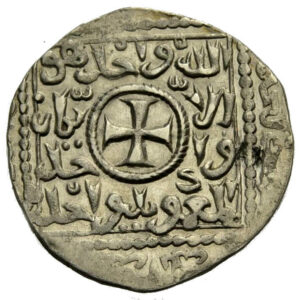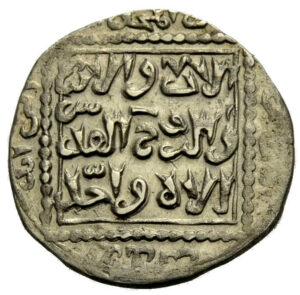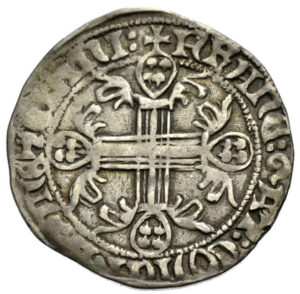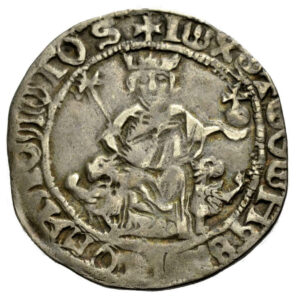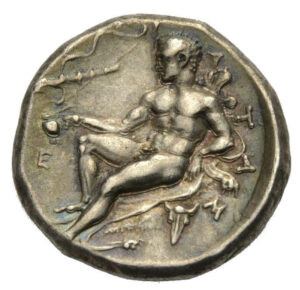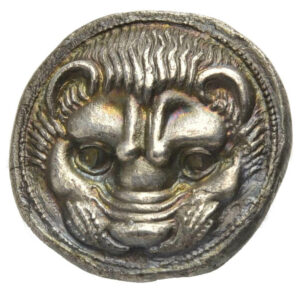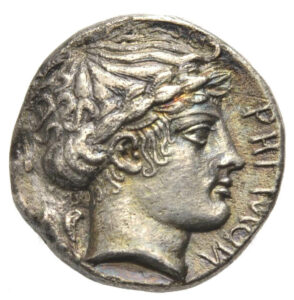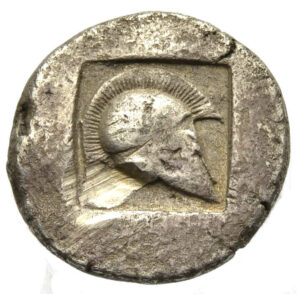Collection of Crusader States at Münzen & Medaillen GmbH
Auction 47 and 48 of Münzen & Medaillen GmbH will take place on Thursday, May 23rd, 2019, and Friday, May 24th, 2019, in Weil am Rhein, Germany, not far from the Swiss border and the city of Basel. The auctions include a wide range of coins from ancient Greek and Roman coins up to the coinage of the 19th Century.
On the first day a collection of coins of the Crusader States will be auctioned which the collector, Erich Wäckerlin, assembled in the course of more than 40 years. The collection contains the whole range of the Crusader issues, Jerusalem, Edessa, Antioch, Tripoli, Cyprus, Rhodes with more than 70 gigliati, and also many coins from Armenia, 20 bilingual trams, and even the rare bilingual half trams of Hetoum I.
Coins of the Gattilusio are included as well as a gigliato of the Maona of Chios and a gigliato of the Emir of Aydin. Remarkable is the number and good quality of the Crusader imitations of Arabian gold and silver. When the Crusaders had taken Jerusalem they coined imitations of the Arab coins which were in circulation, just a little lighter and with a little less gold or silver content. Then the Pope sent an interdict, and afterwards the Crusaders still used Arab script on their coins, but they added crosses, and they replaced the Muslim slogans with Christian slogans.
On the second day, in Auction 48, an exceptional Nomos from Kroton in Bruttium will be offered for sale which was acquired from the Münzen & Medaillen AG Basel in 1980. The Nomos, dating from ca. 300-325 B.C., depicts the facing head of Hera Lakinia with a finely decorated headpiece (Kalathos) and on the reverse, Herakles reclining on a lionskin holding a goblet. Hera Lakinia was a local form of the goddess, named after the nearby Akron Lakinion, today Capo Colonna in Calabria, 12 kilometres from Kroton. The site is renowned today for the single column which remains from the temple of Hera, standing picturesquely on a promontory overlooking the sea. In ancient times the assemblies of the Panhellenic League, which was headed by Kroton, took place here. As in many other parts of the ancient world, Herakles was celebrated in Kroton as founder of the city.
On the second day, in Auction 48, an exceptional Nomos from Kroton in Bruttium will be offered for sale which was acquired from the Münzen & Medaillen AG Basel in 1980. The Nomos, dating from ca. 300-325 B.C., depicts the facing head of Hera Lakinia with a finely decorated headpiece (Kalathos) and on the reverse, Herakles reclining on a lionskin holding a goblet. Hera Lakinia was a local form of the goddess, named after the nearby Akron Lakinion, today Capo Colonna in Calabria, 12 kilometres from Kroton. The site is renowned today for the single column which remains from the temple of Hera, standing picturesquely on a promontory overlooking the sea. In ancient times the assemblies of the Panhellenic League, which was headed by Kroton, took place here. As in many other parts of the ancient world, Herakles was celebrated in Kroton as founder of the city.
Another particularly fine Bruttium coin is the Tetradrachmon from Rhegion , which also has a pedigree from the Münzen & Medaillen AG Basel (from the same collector). The well-known type with facing lion’s head is here perfectly struck. On the reverse is the head of Apollo with a laurel wreath composed of three layers of leaves. This example was mentioned by Hubert Herzfelder in his catalogue in 1957 (75d), who assigned it to his 5th Group of Rhegion silver coins (415-387 B.C).
The auction also includes a stater from a little-known tribe, the Letai (Letae), who lived in the area of Macedonia/Thrace in the 6th Century B.C. The coin depicts a bearded centaur carrying off a nymph in a long chiton; she holds her arm up in resistance, but on her face is an archaic smile… however we may interpret this today, the image is a striking example of archaic Northern Greek art. On its reverse is a Corinthian helmet in an incuse square. Particularly intriguing is that the name, “Letai”, appears clearly on the coin. This is one of very few coins of the early Thracian period where a name occurs – it is presumably an ethnic name referring to the group for whom the coin was struck.
As well as a wide selection of Seleucid coins and some Bactrian coins, the auction also contains some interesting provincial coins. A Hemiassarion of Philippopolis struck under Antoninus Pius (138-161) depicts a naked warrior in a helmet who has been interpreted on art historical grounds as the hero Protesilaos, renowned as the first Greek hero to fall in the Trojan war. Another rarely found mythological figure is the Titan Kronos, the father of Zeus, who is depicted as an old man with veiled head on a bronze of Domitian minted in Flaviopolis (Flavias) in Cilicia. Other provincial coins depict the Roman emperors in whose name they were minted, such as the depiction of Philip II. in a triumphal quadriga on a bronze of Antiochia in Pisidia.
Among the Roman coins is a range of 3rd Century coins, many from the collection of Markus Weder. These include numerous bronze coins struck in the important Milan mint for Gallienus, his wife Salonina, and the emperor who succeeded him, Claudius II. “Gothicus”. There is also a range of Antoninians of Victorinus (268/9-270/1), also from Weder’s collection.
The medieval and modern section has a group of French gros tournois and a selection of coins from South West Germany and Northern Switzerland, Austria, and Italy.
The auction ends with numismatic books.
The catalogue can be viewed at Sixbid (Auction 47, Auction 48) or Numisbids (Auction 47, Auction 48).
Internet live bidding is possible for customers who have registered a few days in advance through Biddr.





